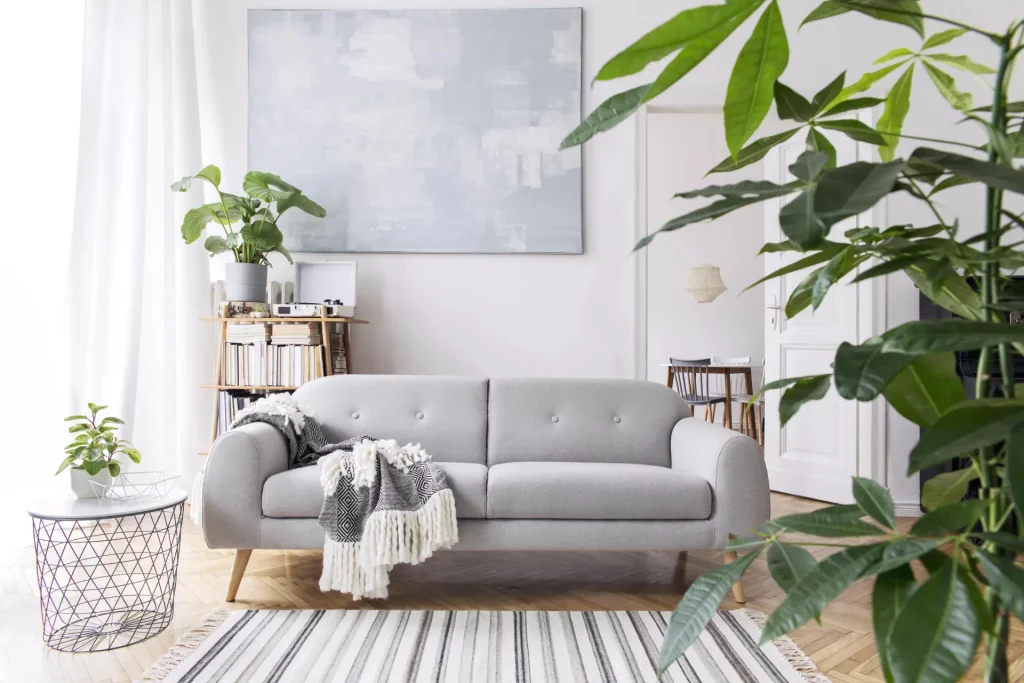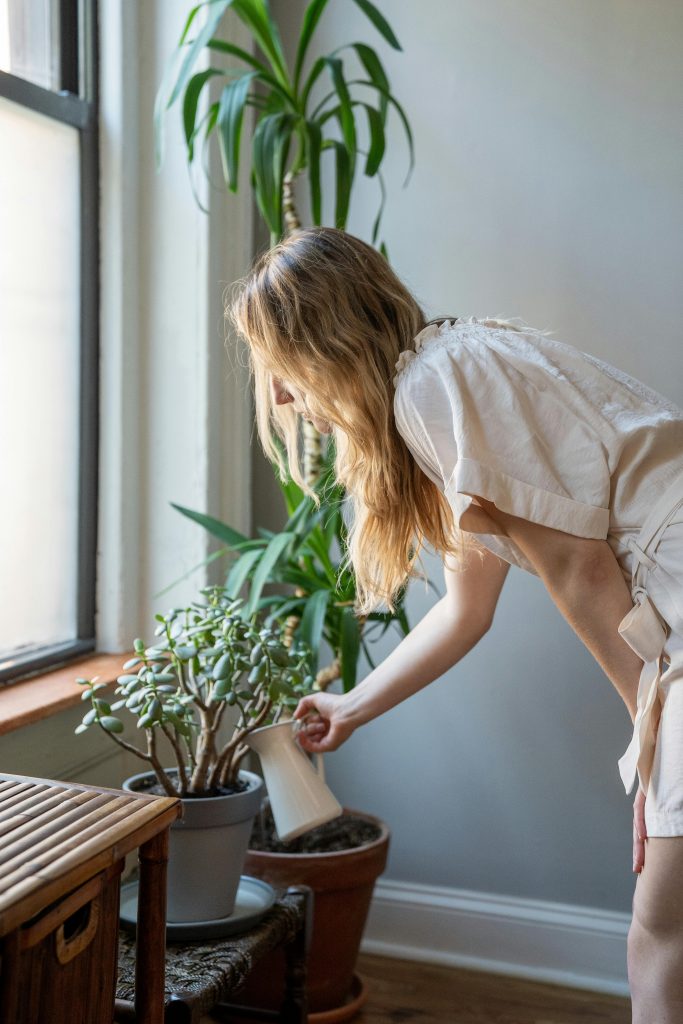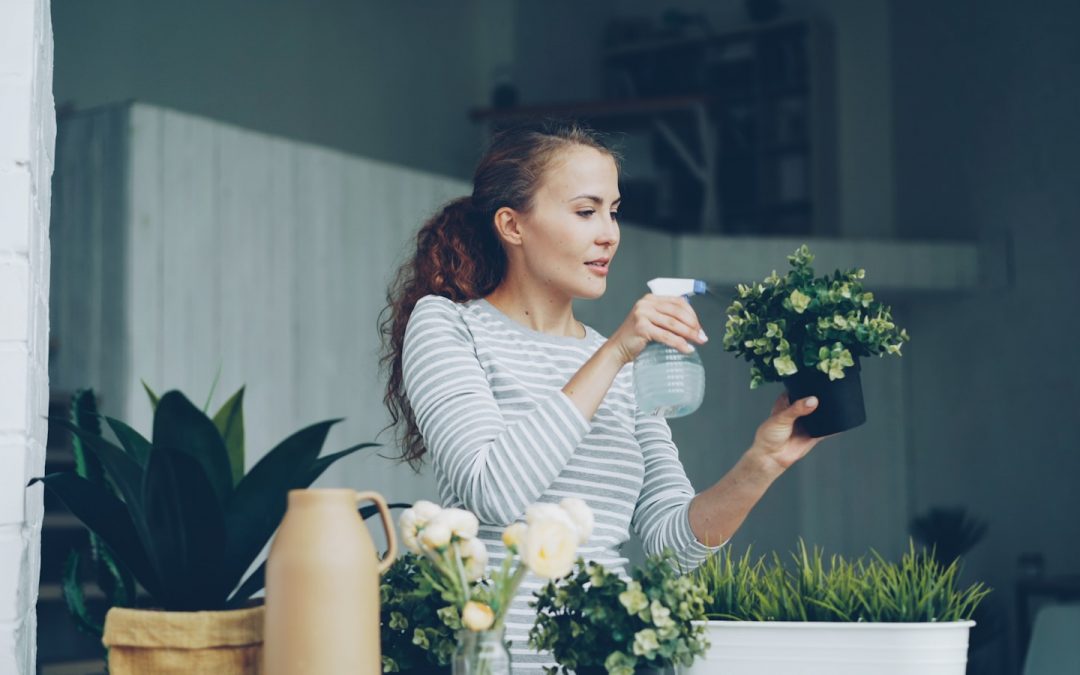Indoor garden care doesn’t have to be complicated. Once you understand light, watering, soil, and a few simple checks, your plants will reward you with healthy growth all year round. This guide will walk you through the essentials so your indoor garden looks lush, not limp.
If you struggle most with when and how often to water, make sure you also read Perfect Watering Schedule for Indoor Plants for a simple, step-by-step watering routine that fits any indoor garden.
Contents
- 0.1 Understand Your Indoor Light Before Anything Else
- 0.2 Watering Your Indoor Garden the Right Way
- 0.3 Soil, Pots and Drainage: Foundation of Indoor Garden Care
- 0.4 Daily and Weekly Indoor Garden Care Checks
- 0.5 Feeding Indoor Plants: When and How Much
- 0.6 Humidity, Temperature and Airflow Indoors
- 0.7 Dealing with Common Indoor Plant Problems
- 0.8 FAQs About Indoor Garden Care
- 0.9 Final Thoughts on Indoor Garden Care
- 0.10 Related Articles
- 1 Use Smart Grow Light Placement to Support Your Indoor Garden
Understand Your Indoor Light Before Anything Else
Good indoor garden care starts with light. Even if you water perfectly, plants won’t thrive in the wrong spot. Most indoor plants prefer bright, indirect light, which usually means close to a window but not pressed against hot glass.
South- and west-facing windows tend to be brightest; north-facing windows are softer and better for low-light plants like snake plants and ZZ plants. If a plant is stretching towards the window, becoming pale, or dropping lower leaves, it’s telling you it wants more light. Scorched patches or faded, crispy leaves usually mean it’s getting too much direct sun.
In darker homes, a simple LED grow light for indoor plants can make a huge difference, especially in winter or for light-hungry herbs and veggies.

Watering Your Indoor Garden the Right Way
Most indoor garden care problems come from watering – usually too much, occasionally too little. The goal is consistent, thoughtful watering, not a fixed “once a week” schedule.
Get into the habit of checking the soil with your finger before watering. Many foliage plants like the top 2–3 cm of soil to dry slightly between waterings; thirstier plants (like some herbs or veggies) may prefer more frequent moisture, while succulents want to dry almost completely. Always water thoroughly until a little comes out of the drainage holes, then empty any water left in saucers after 10–15 minutes.
Try to avoid the “little and often” approach that only wets the top crust. Deep watering encourages stronger roots and more resilient plants, which makes every part of indoor garden care easier.

Soil, Pots and Drainage: Foundation of Indoor Garden Care
Healthy roots = healthy plants. For good indoor garden care, your soil and pots need to support roots rather than suffocate them. Most indoor plants prefer a free-draining potting mix specific to their type: standard houseplant mix for foliage, cactus and succulent mix for dry-lovers, and rich but light mixes for indoor herbs and vegetables.
Always use containers with drainage holes. Decorative baskets, sleeves and cachepots are fine as long as the real nursery pot inside can drain and you tip away excess water regularly. If your plants are in heavy, old compost that stays wet for days, consider repotting into a fresher, lighter mix at the start of the growing season.
According to houseplant advice from trusted gardening organisations, most indoor plants do best in containers that are only slightly larger than their current root ball, with fresh compost every couple of years to keep structure, drainage and nutrients in balance.
Daily and Weekly Indoor Garden Care Checks
A simple routine makes indoor garden care feel effortless rather than overwhelming. Instead of waiting for big problems, make quick checks part of your day or week.
Every few days:
Check soil moisture with your finger.
Look for drooping, pale or yellowing leaves.
Turn pots slightly so plants grow evenly towards the light.
Weekly or so:
Wipe dust off large leaves with a damp cloth so they can photosynthesise properly.
Check under leaves and at stems for pests such as aphids, spider mites or scale.
Remove dead, yellow or damaged leaves to keep plants tidy and reduce disease risk.
A regular, gentle once-over is often enough to catch problems early and keep indoor garden care simple rather than reactive.
Feeding Indoor Plants: When and How Much
Fertiliser is part of indoor garden care, but it’s surprisingly easy to overdo. Most plants only need feeding during active growth in spring and summer. Over-feeding can cause soft, weak growth, salt build-up in the soil, and brown tips.
A good general rule is to use a balanced liquid fertiliser at half the label strength every 4–6 weeks during the growing season, and then stop or reduce feeding in autumn and winter when growth slows. Flowering or fruiting plants may appreciate a dedicated bloom or tomato fertiliser, but always start weaker than recommended and increase only if plants look hungry.
If you notice powdery residue on top of the soil or around the pot, flush the pot with plain water to wash out excess salts and let it drain well before feeding again.
Humidity, Temperature and Airflow Indoors
Indoor garden care isn’t just light and watering – air and temperature matter too. Most common houseplants like similar conditions to people: 18–24°C, no cold draughts, and no baking, dry air right next to a radiator.
Dry indoor air can lead to crispy leaf edges, especially for tropical plants like calatheas and ferns. Grouping plants together, using a pebble tray with water below (not touching the pot), or occasionally misting foliage can gently raise local humidity. Good airflow also helps prevent fungal problems, so avoid packing plants so tightly that leaves are always touching and air can’t move.
If you’re not sure what your room conditions are like, a small digital thermometer and hygrometer makes it easy to monitor both temperature and humidity so you can fine-tune your indoor garden care.
Dealing with Common Indoor Plant Problems
Even with good indoor garden care, problems happen – the trick is recognising patterns.
Yellowing leaves often point to overwatering, low light, or natural ageing of older leaves.
Brown, crispy tips can come from dry air, underwatering, or fertiliser build-up.
Leggy, stretched stems almost always indicate not enough light.
Sticky residue or webbing suggests pests such as aphids, scale or spider mites.
When something looks off, check the basics in this order: light, watering, drainage, then feeding. Most issues improve once those are corrected. For persistent pests, start with physical methods (wiping leaves, showering plants) before moving to gentle, plant-safe sprays.
FAQs About Indoor Garden Care
1. How often should I water my indoor garden?
There’s no single schedule that suits every plant. Instead, check each pot individually: water when the top of the soil feels dry for most foliage plants, allow more drying for succulents, and keep herbs and veggies a little more evenly moist.
2. Do all indoor plants need fertiliser?
Most plants benefit from light feeding during spring and summer, but they don’t need heavy fertiliser. Use a diluted, balanced feed every few weeks while plants are actively growing, and avoid feeding in winter unless a plant is under strong grow lights.
3. Can I keep all my indoor plants in the same room?
Yes, as long as their light and temperature needs are similar. Group shade-lovers together and sun-lovers closer to windows. Keep very humidity-loving plants (like ferns) in bathrooms or kitchens if your living room air is dry.
4. How do I know when to repot?
Signs include roots circling tightly at the bottom, very fast drying soil, stunted growth, or the plant becoming top-heavy and unstable. In general, repot every 1–2 years into a pot one size larger with fresh mix.
5. Are grow lights necessary for indoor garden care?
Not always, but they’re very helpful in dark homes, north-facing rooms, or during winter. If your plants are stretching, fading, or not flowering, adding a good LED grow light can significantly improve their health.
Final Thoughts on Indoor Garden Care
Indoor garden care is really about building a few simple habits rather than memorising complex rules. Once you understand how light, water, soil and temperature work together, it becomes easy to spot what your plants are asking for and adjust before small issues turn into big problems.
Start by improving one area at a time – maybe light placement this week, watering technique next week, then repotting tired plants into fresh mix. Over time, you’ll get to know your indoor garden’s rhythms and your confidence will grow with every new leaf, flower or harvest. With steady, gentle care, your home can feel like a healthy, living space rather than a graveyard of sad plant pots.
Related Articles
MAKE INDOOR PLANT CARE EVEN EASIER
Use Smart Grow Light Placement to Support Your Indoor Garden
If some areas of your home are still too dark for healthy growth, our Indoor Plant Grow Light Guide shows you how to choose, position and time grow lights so your plants get the right amount of brightness without wasting energy. It’s a simple upgrade that can transform weak, struggling plants into strong, leafy growers. 🌿

